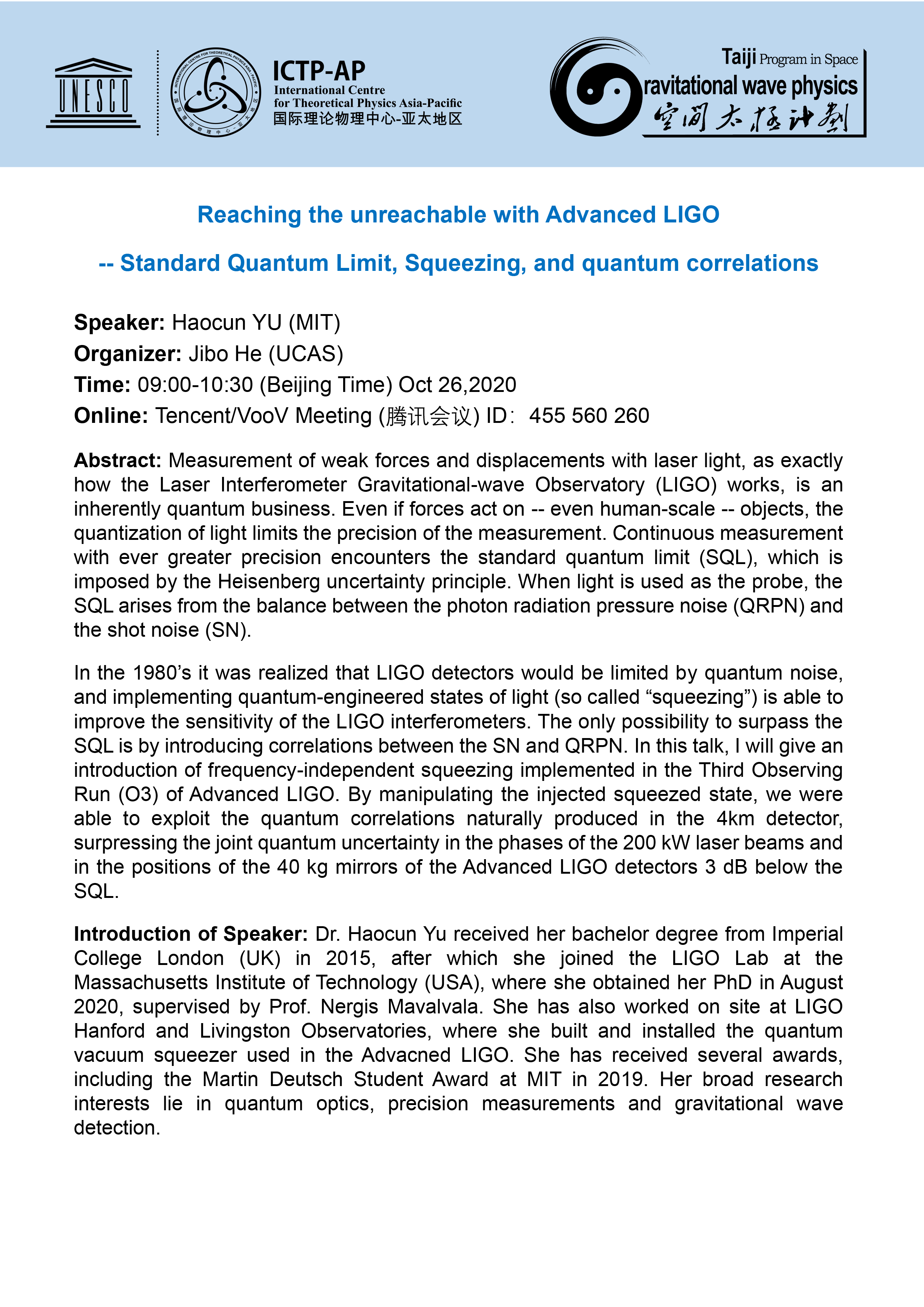Reaching the unreachable with Advanced LIGO ----- Standard Quantum Limit, Squeezing, and quantum correlations
Tencent/ VooV Meeting (腾讯会议) ID:455 560 260
Abstract: Measurement of weak forces and displacements with laser light, as exactly how the Laser Interferometer Gravitational-wave Observatory (LIGO) works, is an inherently quantum business. Even if forces act on -- even human-scale -- objects, the quantization of light limits the precision of the measurement. Continuous measurement with ever greater precision encounters the standard quantum limit (SQL), which is imposed by the Heisenberg uncertainty principle. When light is used as the probe, the SQL arises from the balance between the photon radiation pressure noise (QRPN) and the shot noise (SN).
In the 1980’s it was realized that LIGO detectors would be limited by quantum noise, and implementing quantum-engineered states of light (so called “squeezing”) is able to improve the sensitivity of the LIGO interferometers. The only possibility to surpass the SQL is by introducing correlations between the SN and QRPN. In this talk, I will give an introduction of frequency-independent squeezing implemented in the Third Observing Run (O3) of Advanced LIGO. By manipulating the injected squeezed state, we were able to exploit the quantum correlations naturally produced in the 4km detector, surpressing the joint quantum uncertainty in the phases of the 200 kW laser beams and in the positions of the 40 kg mirrors of the Advanced LIGO detectors 3 dB below the SQL.
Introduction of Speaker: Haocun Yu received her bachelor degree from Imperial College London (UK) in 2015, after which she joined the LIGO Lab at the Massachusetts Institute of Technology (USA), where she obtained her PhD in August 2020, supervised by Prof. Nergis Mavalvala. She has also worked on site at LIGO Hanford and Livingston Observatories, where she built and installed the quantum vacuum squeezer used in the Advacned LIGO. She has received several awards, including the Martin Deutsch Student Award at MIT in 2019. Her broad research interests lie in quantum optics, precision measurements and gravitational wave detection.



